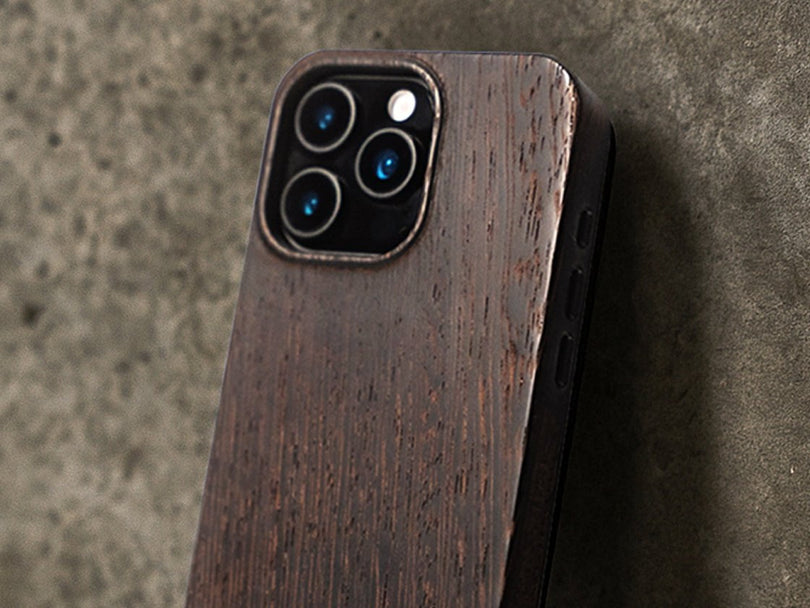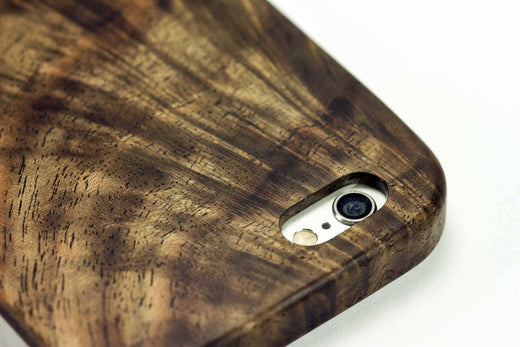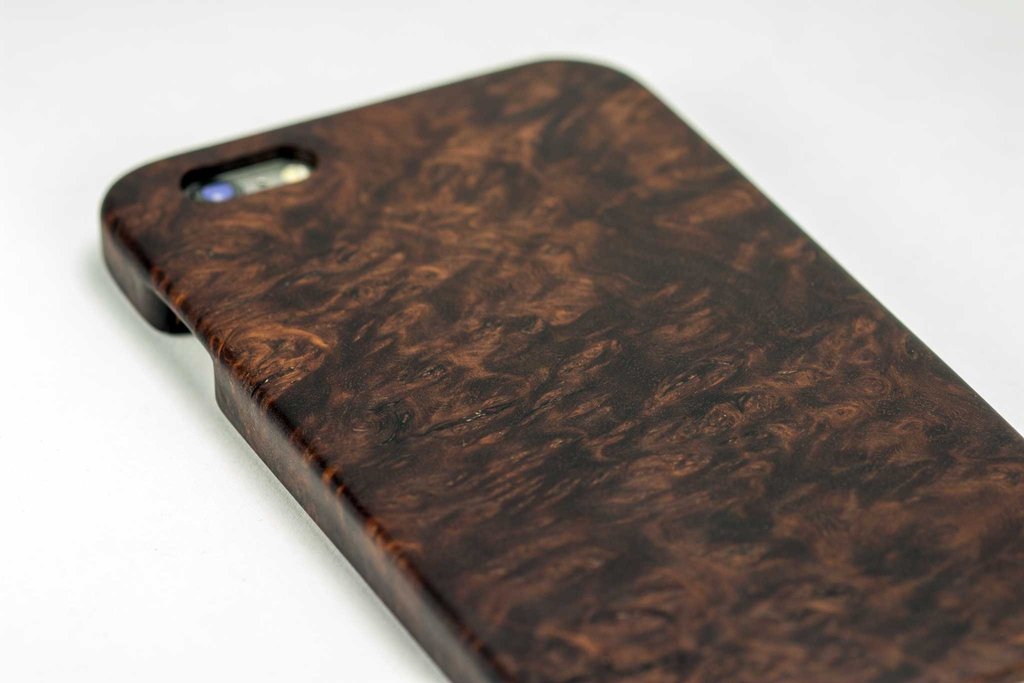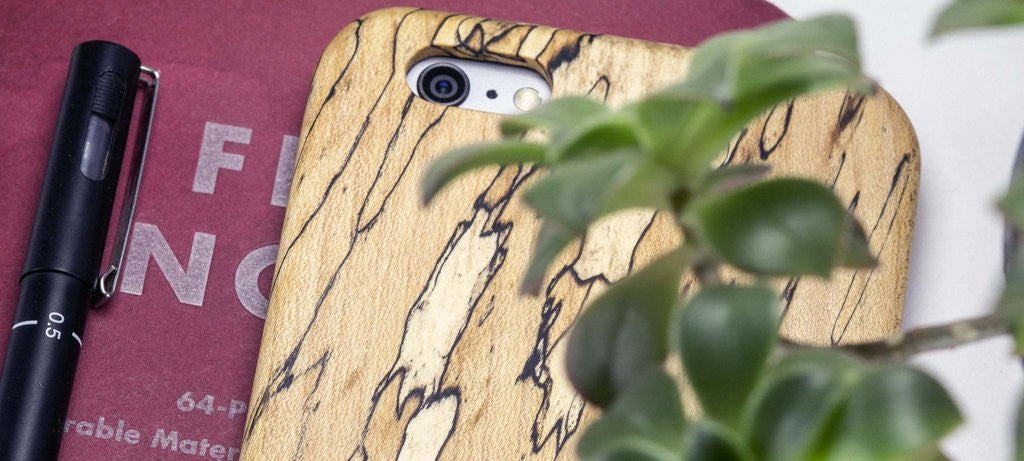In order to craft the best handmade wood iPhone and Pixel cases possible, KerfCase offers a wide variety of wood species, some of which incorporate unique features that are especially prized.
If you're not a woodworker, but you want to learn more about what makes some wood cuts (and some cases) especially beautiful, enjoy our four-part series on unique wood features!
Part 1: Spalting | Part 3: Burl Wood | Part 4: Chatoyancy
What is it about figured walnut that makes it so beautiful and prized? Read on to find out.
No two pieces of wood are alike. One of the great joys of working with wood is knowing that no matter if you're carving a Greek god or nailing together a bookshelf, your creation will be 100% unique. Like snowflakes and fingerprints, the grain pattern that forms in trees never perfectly repeats, so each board will have its own unique appearance.
This uniqueness exists on a spectrum; many cuts of wood look almost alike, the differences only perceptible to a seasoned viewer, or a microscope. For craftsmen looking for uniformity across a large project, this is a good thing. But we at KerfCase are specialty woodworkers, looking for the most unique and interesting pieces of wood around to use in our truly one-of-a-kind cases. So let's take a look at the special things that we look out for in our wood selection, zooming in this week on figured wood.
A Step Backward
In order to move on from our discussion of spalting last week, we first have to get more general.
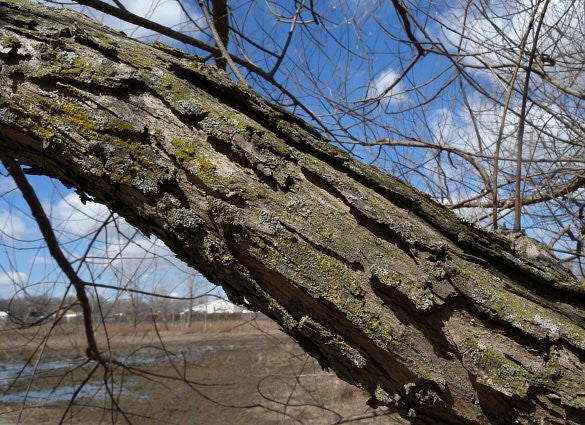
Pictured: wood. (OK, maybe not that general!)
My original aim with this series was to discuss our wood features roughly in the order of their popularity, and so last week I started my series with spalted wood, because our spalted maple case is roughly our second-most popular (after fan favorite walnut), and planned to feature figured wood this week.
This order has painted me into a semantic corner, so please allow me to take two steps back and get some terms straight so that we can have a not too confusing discussion.
When we speak about a particular cut of wood, the shape of the grain and the pattern it makes are referred to as its figure. Since all wood has a grain pattern, this makes one definition of "figured wood" rather meaningless; if "figured wood" means "this wood has a figure", then all wood is figured wood!

So many figures!
Like saying "proteined meat" or "salty ocean", the adjective isn't helping its noun out too much. So let's define figured wood instead as wood that possesses an interesting and desirable figure.
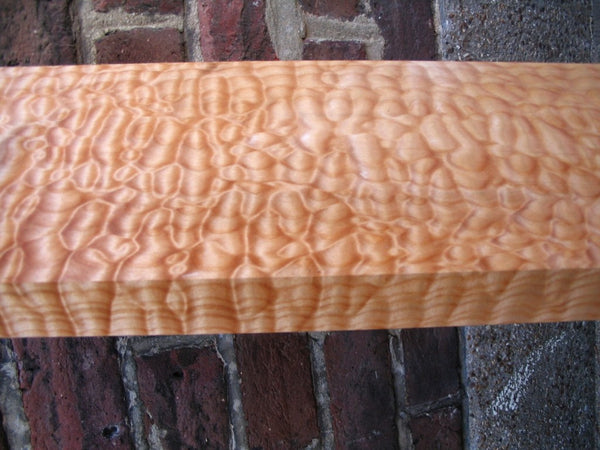
This narrows our definition somewhat, but it is still overly broad. Spalting is an example of figured wood, for instance. As are burls and chatoyance, two features I have reserved for future articles. For our purposes, we're going to focus on the few types of figuring that are found in our figured walnut, using our regular walnut supply as a counterexample.
A Figured Case Study: Walnut
Here's an example of the figure you most often get from quartersawn walnut wood, in case form:

And here is a case made from our figured walnut:

There's a few things to notice when you contrast these two cases.
- The first thing to look at is grain pattern. Notice how there appear to be two different patterns overlapping one another. This is a telltale sign that you're getting wood from the joint of the trunk and a branch, or a gnarled part of the tree.
- These irregularities can really alter the color range of the wood grain. Notice that in our regular walnut, the grain forms stripes of various colors, but the clashing patterns in our figured case run the gamut from very dark to very light in much more interesting ways.
- The horizontal grain forms ripples, or curls, that are a prized feature in their own right. Many of our figured walnut cases are made from curly walnut, formed from unique growing conditions and pressure on the grain. Curly wood takes on a shimmery, 3D property known as chatoyance that is highly prized. More on that later.
While the bottom case is more interesting than the top by most measures, I couldn't help but notice that our "plain jane" walnut case has a little figuring of its own! The small knot under the camera hole causes the grain to ripple around it, bringing a little fun to an otherwise orderly pattern. It goes to show you that even our "ordinary" cases have the ability to surprise!
Figure Out Your Perfect Case
It bears repeating when it comes to our more unique cases that you're getting a one-of-a-kind piece of woodworking when you order a KerfCase, and it's never going to look exactly like the picture.
Fortunately, it's fun to help pick the cut you like the best for your next case! One of my favorite parts of my job is showing customers their grain options between purchase and carving, so drop me a line or message us on Facebook if you'd like to see our selection and pick the grain pattern (and figuring!) that's perfect for you. I'd be happy to show you our coolest cuts, and point out special features that might not have been mentioned here.
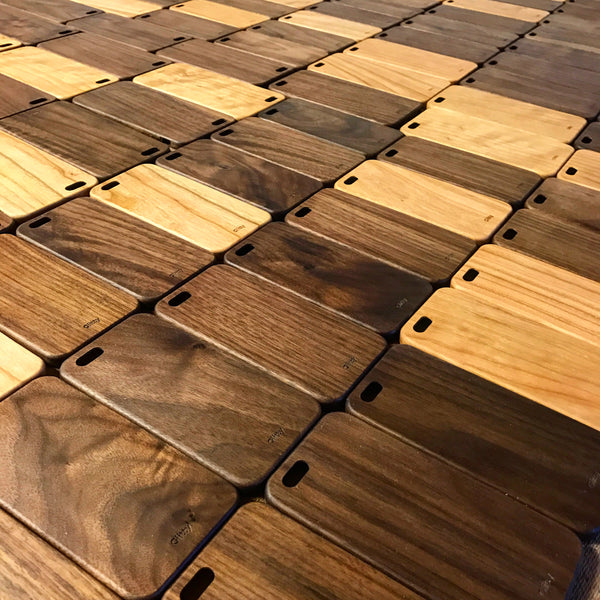
Also remember to contact us if your case starts to crack or takes a fall. We know you picked your case especially for its beautiful grain patterns, so we offer our lifetime service policy to make sure that your case is in its original condition as long as you own your phone.
Tune in next week for a primer on our next wood feature, Burl Wood!
Phil Giammattei likes to wear lots of different hats. Formerly employed at Apple, Google and Oracle, he loves applying his technical knowledge to making the best possible custom wooden phone cases. In addition to writing the Kerf Blog, Phil’s duties at KerfCase include customer service, sales, production, shipping and fulfillment, and anywhere else he can be helpful. Reach out to say hi and find out what choice cuts we have in stock!

